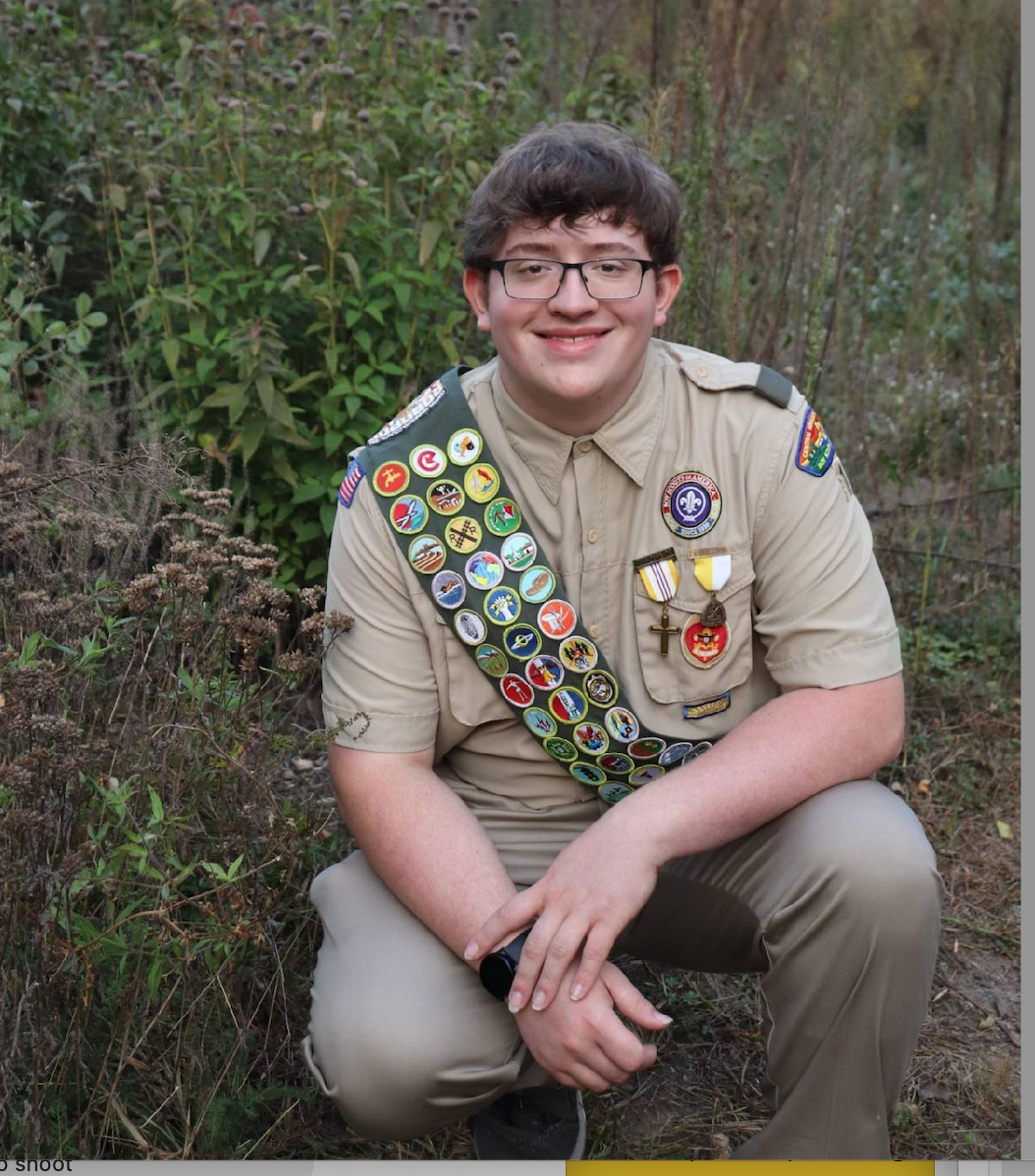Shout-out to Renzo Vita! BSA Conservation Service Award Celebrates Pollinators
By Chris Burda | March 11, 2023
On March 26, The Boy Scout Eagle Court of Honor will present Renzo Vita with the BSA Distinguished Conservation Service Award in his hometown of Princeton, MN. The award is in recognition of his special project, a pollinator garden now thriving in Princeton’s Riebe Park. Minnesota Renewable Energy Society (MRES) salutes Renzo for this achievement and for his related work at the 2022 Minnesota State Fair’s Eco Experience as an MRES volunteer.
MRES Eco Experience volunteer Renzo Vita engaging a visitor
MRES staff met high school senior Renzo Vita and his family when they volunteered at the 2022 State Fair’s Eco Experience. MRES welcomes volunteers of all ages and takes notice when someone demonstrates a keen interest in renewable energy and an aptitude for educating others. We were impressed with Renzo’s ability to engage visitors in friendly and informative discussions at the Solatube demonstration, the Get Ready for Solar exhibit, and the Solar Pollinator Garden display.
MRES interviewed Renzo for this article and he shares his story here.
What inspired your interest in solar energy and pollinators?
“I did a lot of research on solar in 7th and 8th grade. Looked on the University of MN website and figured it out online, reading, watching videos. I randomly ran across a good video on solar power. At first I thought it was a sci-fi alien thing—a radar structure of some kind. At some point, solar energy turned from a kid’s thing into an adult thing, like it has a lot of potential.
I’ve been interested in pollinators since I was young. I’m a big gardener. Vegetables and apples, blueberries, strawberries and raspberries. We had a lot of milkweed. I planted one and the rest just came. I collected 180 seed pods, put some in Riebe Park, and scattered the rest in empty lots.”
Native plants are best for feeding bees, butterflies and other pollinators
How did you come up with the pollinator garden idea?
“Community projects in conservation and environment have always been an important part of the Boy Scouts of America’s program. For my Eagle Scout project I chose pollinator management because it combined my interests in plants, pollinators and the environment.
Princeton Public Works Director, Bob Gerold, helped me launch the project. We talked about ideas and landed on either a rain garden or pollinator garden. The city wanted both. Cities in Minnesota can bring in more money for their parks when they do environmental projects. I chose the pollinator garden. It was a win-win.
Mr Gerold and I walked around town to find the best place for the garden and decided on Riebe Park, a flat, pre-tilled 2000 square foot bed with good soil that looked easy for me to work with. The area gets 6-8 hours of full sun, an essential ingredient.”
Renzo reimbursing Princeton Mayor Thom Walker for the City’s purchase of pollinator plants.
Who was involved in the pollinator garden project?
“It was a team effort that required me to do most of the work—the research, development and making it happen. I did about 70% of the project myself, which was required for my certification.
I asked for help from my parents, my Boy Scout Troup 16, and my project advisor Robert Elliott. Me and a group of 25 people planted the garden—my parents, friends, community members, and other scouts looking to earn merit badges.
The city bought all of the plants, and I reimbursed them with my scout project money. They used some of it to pay a man who watered the garden at night. I weeded it for about a year and a half. But the plants filled in so well, especially after over-seeding the bed, that they no longer need much watering.”
How did you decide what to plant?
“I asked Prairie Restorations, Inc. (our local resource for native plants) for a list, and they gave me five pages of possibilities. I needed to learn for myself which pollinator plants grew well with each other and how to group them. To get a BSA success rating, my project had to go from spring to when snow fell, so I chose plants that bloomed in spring, summer, fall and also helped pollinators weather the winter. I picked groups of plants native to the Princeton and surrounding counties that together would make the garden feel full, whole—13 perennial native plants. Over 2000 plants in all.
I also put up two “bee hotels” around the garden that are obvious to see. They’re small wooden houses made of little bamboo rods. Bees put their larva in there and pack mud over them. They’re just cool little houses, and I like the big fat yellow bumble bees that visit. I put one house in the garden and one in the tree away from the garden.”
What’s next?
“COVID over 2020-21 gave me time to focus and spend late nights planning. At this point, my part in creating the Riebe Park Pollinator Garden is finished and lives on under the care of mostly park volunteers. With required project paper work finally finished and college classes underway, I prepared and presented my project to the BSA Review Board for final approval. They approved! It was a lot of work, but I learned a lot and it was worth it.”
Interpretive graphic panel in Riebe Park acknowledging Renzo Vita and the BSA (source)
Congratulations, Renzo!
Renzo, you’re an inspiration to all of us at MRES and to other young people interested and willing to make a difference. Best of luck in whatever adventure lies ahead. And remember, you’re always welcome to volunteer with MRES at the 2023 Eco Experience!





